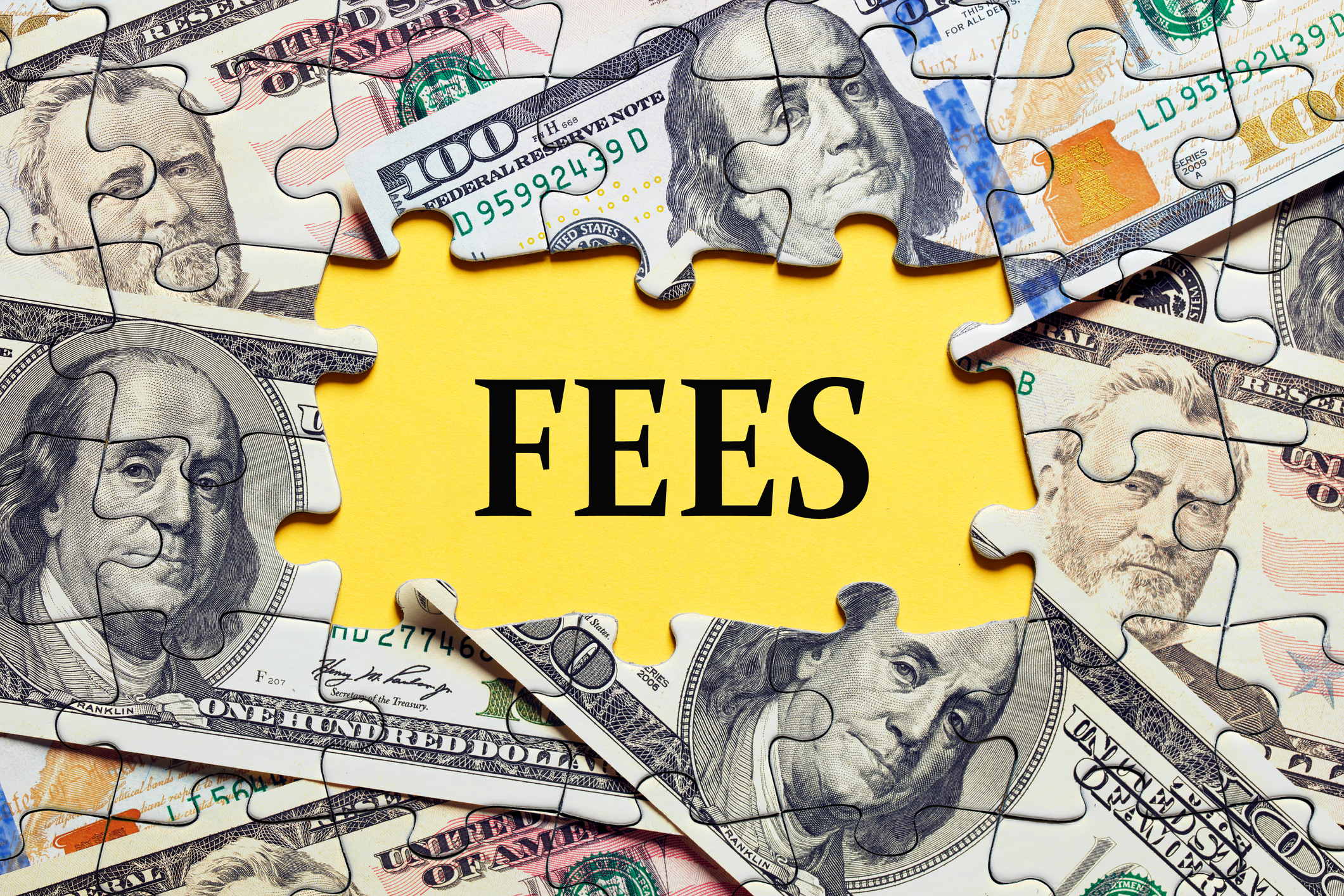Contrary to the claims that Washington state is a “leader” in clean energy jobs and investment, the state lags badly behind most other states and has one of the worst records in the country. These dismal numbers contradict claims that Washington’s CO2 tax, known as the Climate Commitment Act, would spur growth in that sector.
In fact, the states with the largest increases in clean energy jobs and investment don’t have CO2 taxes or aggressive climate policies. Business friendly states, rather than those with government-led climate policy, have seen the largest investments in the sector.
A recent study funded by supporters of the CO2 tax claimed that the government programs funded by the Climate Commitment Act (CCA) would create tens of thousands of new jobs and billions in economic output. The CO2 tax has been in effect for nearly two years. The state has begun spending the $2.5 billion budgeted from CCA funds.
The Executive Director of Clean & Prosperous Washington Michael Mann recently claimed “Washington state has become a leader in the most innovative and important sectors of addressing climate change and creating clean energy jobs. And the Climate Commitment Act has accelerated that massively over the past two years.”
That simply isn’t true and data from multiple sources show the opposite – “green” jobs aren’t being created in Washington state.
Data from the U.S. Department of Energy (DOE) and the Clean Investment Monitor show that Washington lags behind much of the rest of the country in creating “clean energy” jobs.
DOE tracks new clean energy projects across the country. The web page claims government subsides “are leading to announcements of historic levels of private sector investments in the United States.” Assuming that is accurate (a questionable assumption), where are those jobs being created?
The BP-funded Clean & Prosperous Institute bragged earlier this week that Washington state “is bonkers for batteries.” According to the DOE tracker, Washington has a few projects, including 25 jobs related to offshore wind and another 515 in battery construction, for a total of 540 jobs.
That number of jobs is tiny compared to most other states.
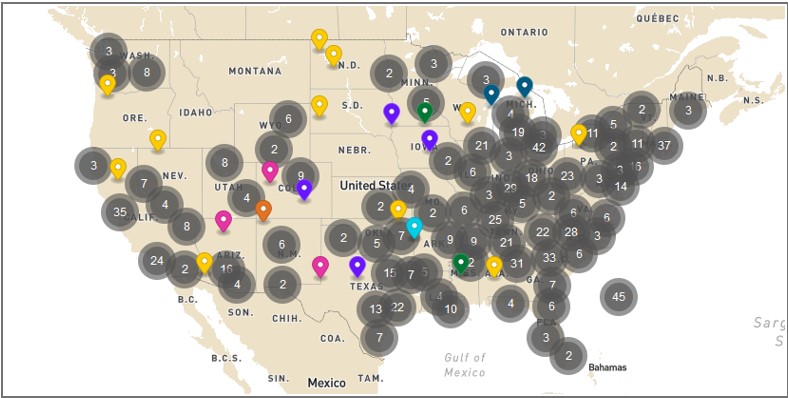
Washington lags in total jobs created and even jobs in battery manufacturing. Clean energy projects in Louisiana have created an estimated 1,665 jobs, 772 of which are in battery construction. West Virginia also blows Washington out of the water. The Mountain State has 1,540 clean energy jobs, with 1,240 – almost three times Washington state – in battery manufacturing. Even Arkansas has nearly as many “clean energy” jobs as Washington, with 343, 143 in battery manufacturing.
Those are just the small states. Other states far surpass Washington’s numbers.
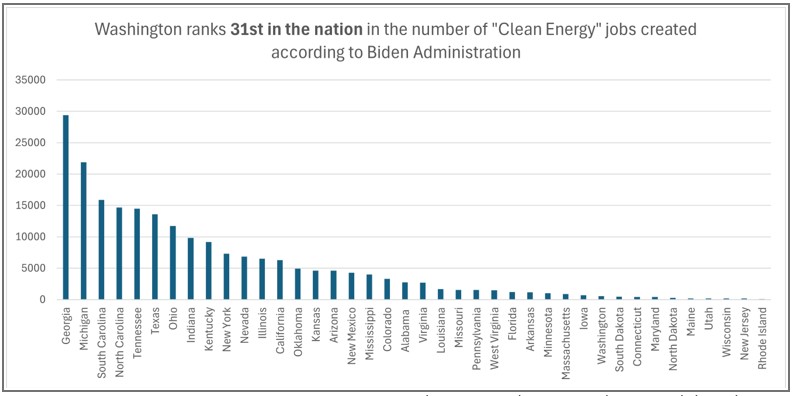
Tennessee, for example, created 14,509 clean energy jobs according to the Biden Administration. More than 7,000 of those are in battery manufacturing. DOE’s tracker reports that projects in South Carolina are creating 15,903 jobs, with 7,379 in battery manufacturing. Georgia is tops, with 29,385 jobs reported, with 9,802 of those in battery manufacturing.
Of the 45 states listed by the Department of Energy, Washington ranks 31st in the creation of clean energy jobs, just ahead of South Dakota and behind Iowa.
You’d have to be bonkers to think that Washington is doing well when creating clean energy jobs in batteries or anything else.
The Clean Investment Monitor tells the same story.
Tracking manufacturing investment announcements in the last four quarters, they find only one announcement in Washington state worth $220 million. Oklahoma, by way of comparison, had four projects announce investment, worth a total of nearly $2 billion. Nevada had three projects announced for a total of nearly $1.5 billion. Those are the smaller states. States like Indiana, North Carolina, Georgia, Ohio and Texas had many projects worth billions of dollars in each state.
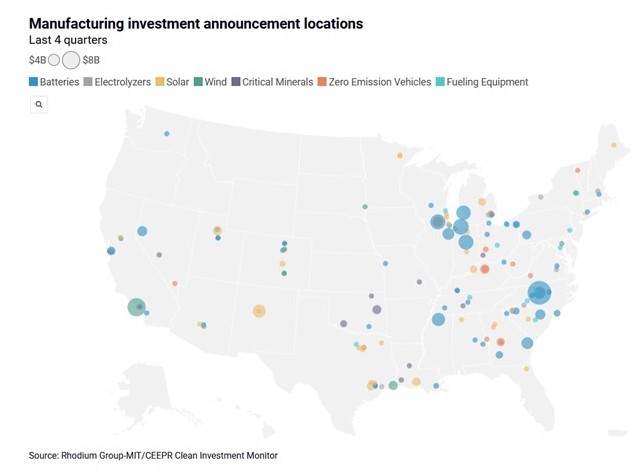
Clean Investment Monitor’s map of new “Energy and Industry investment” announcements is even more stark, showing Washington far behind almost all other states.
Washington has just two new projects announced in the last four quarters worth just over $100 million. Idaho, however, had five projects worth just over $1 billion – ten times Washington’s amount. Wyoming, with its tiny population, has even more investment. They have several projects worth more than $4.5 billion.
Of course, neither Idaho nor Wyoming have a CO2 tax or any kind of climate policy as expensive as Washington’s. Washington residents are paying much more, but the jobs aren’t following.
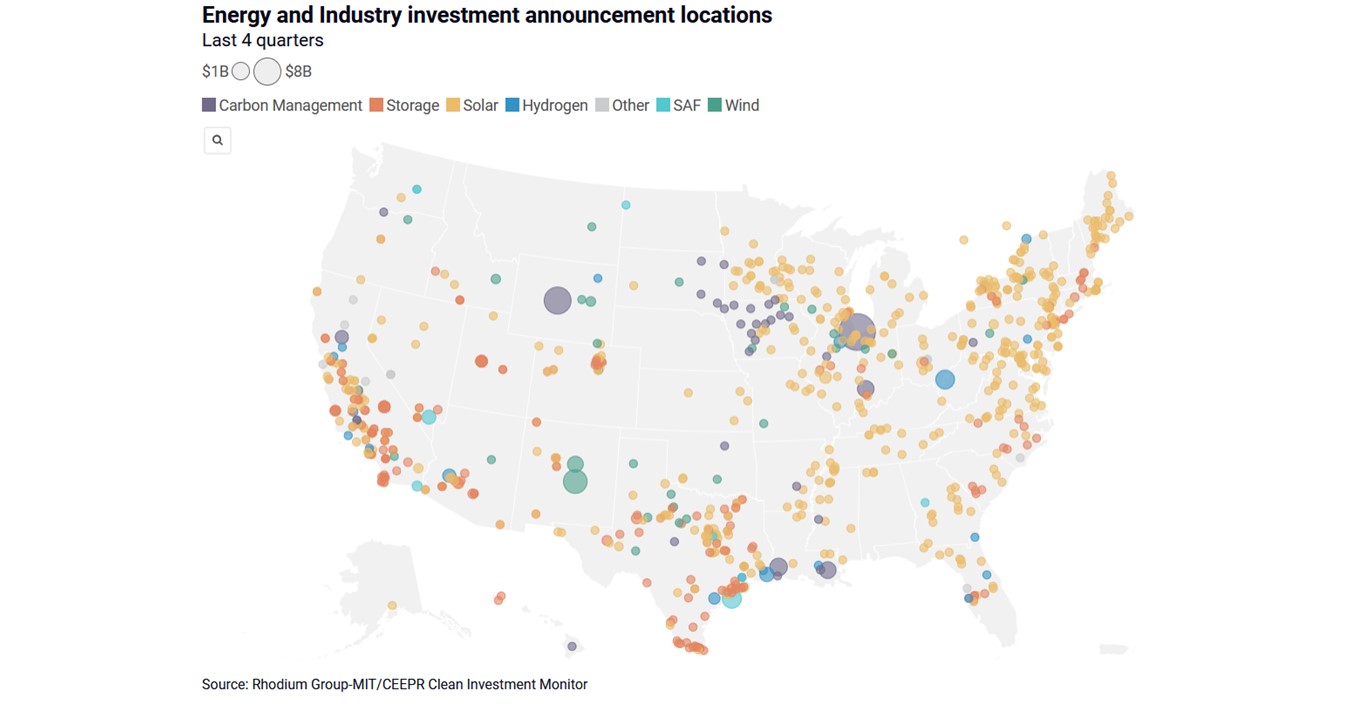
Virtually every other state in the nation has seen much more activity in these industries than Washington. Contrary to the claims that Washington is a “leader” in climate policy and “creating clean energy jobs,” Washington has one of the worst records in the nation.
Supporters of the CO2 tax might respond that the CCA hasn’t had enough time to work. Those same people, however, are already claiming that Washington isa “leader,” not that it will be someday.
More to the point, the states with the largest increases in clean energy jobs and investment, like Georgia, the Carolinas, Texas, Ohio and elsewhere don’t have a CO2 tax or aggressive climate policies. If state climate policy is critical, why are those states leading in jobs and investment while Washington fails?
Supporters of the CO2 tax may also claim that Washington’s totals don’t count all the new clean energy jobs created. Perhaps, but that certainly could be said about other states as well and there is no indication that Washington has more hidden clean energy jobs that other states.
In fact, Washington has the fifth worst overall unemployment rate in the country. Fifth worst. If there are jobs being created in the clean energy sector, they aren’t impacting Washington’s poor unemployment rate.
Washington’s poor business climate is undermining job growth in all sectors in the state. The expensive CO2 tax isn’t fixing that problem. Washington families are simply paying more for energy while continuing to have one of the worst unemployment rates in the country.




